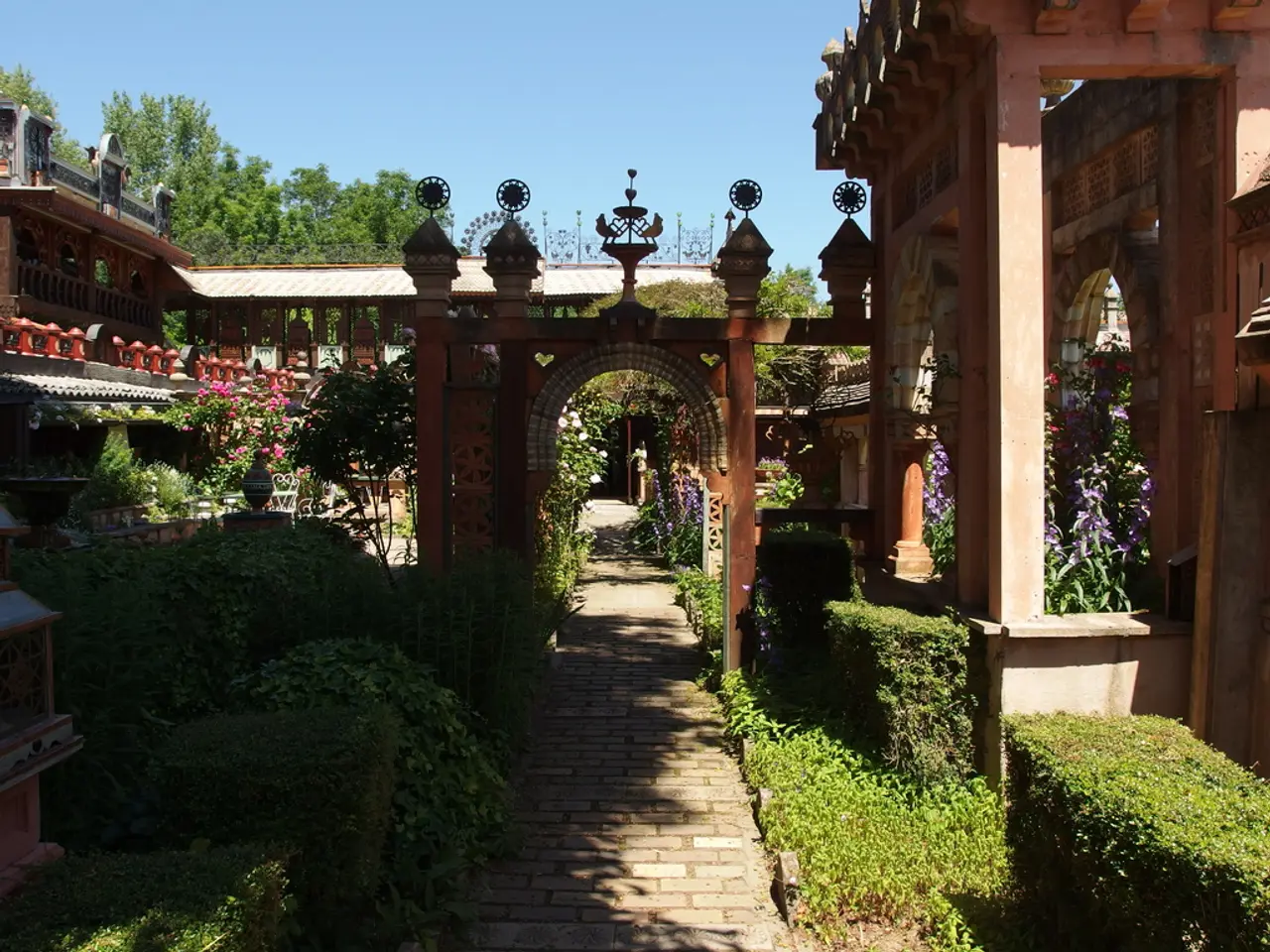Guide for Assisting Pollinators: Steps You Can Take to Aid Pollinators
In Ohio, gardeners can play a crucial role in the conservation of key pollinators like honey bees, native bees, and monarch butterflies. By creating and maintaining pollinator-friendly habitats using native flowering plants that provide nectar and pollen throughout the growing season, and adopting chemical-free gardening practices, gardeners can help sustain these vital creatures [1][5].
Effective strategies include planting diverse native perennial wildflowers that bloom sequentially from spring through fall to supply continuous nectar sources. Incorporating host plants, such as milkweed for monarch butterflies, which are crucial for their larval stages, is also essential [1][5].
Some recommended plants for supporting Ohio pollinators include milkweed (Asclepias spp.), a vital host plant for monarch caterpillars and an excellent nectar source for many pollinators. Purple coneflower (Echinacea purpurea), a native perennial popular with bees and butterflies, is another recommended choice [2][4][5]. Asters and goldenrods, which bloom late in the season, provide important nectar sources in fall. Butterfly weed (Asclepias tuberosa) and mountain mint (Pycnanthemum spp.) are also favourites among pollinators [2][4][5].
Incorporating a mix of plants with varied bloom times and structures supports a diverse pollinator community year-round. Native prairie plants, such as those found in Ohio’s tallgrass prairies, offer rich habitat and forage for pollinators and help maintain ecological balance in the region [5].
Other threats to pollinators include viral and fungal pathogens, pesticides, invasive plants, pests such as the varroa mite (specific to honey bees), and climate change. Providing a water source, such as a shallow dish or a birdbath filled with stones or sticks, can allow visitors to land without drowning.
Many plants frequently considered weeds, such as dandelions, milkweed, goldenrod, and clover, provide important food for pollinators. Consider tolerating these weeds. Grouping plants together in clumps can help pollinators find their food more easily.
In gardens and conservation areas, avoid using pesticides on plants visited by pollinators, including flowering plants and caterpillar host plants. Use an integrated pest management (IPM) approach to reduce pest pressure. Bees are uniquely adapted to gather and transport pollen. Ohio is home to approximately 500 species of bees.
Resources for learning more about pollinators include the Pollinator Partnership (pollinator.org), The Ohio State University Bee Lab (beelab.osu.edu), and the Xerces Society for Invertebrate Conservation (xerces.org). By focusing on these native plants and habitat-friendly gardening approaches, Ohio gardeners can actively help reverse pollinator declines and support healthy, resilient pollinator populations.
[1] Ohio Department of Natural Resources. (n.d.). Gardening for Pollinators. Retrieved from https://www.ohiodnr.gov/pollinators
[2] The Ohio State University Extension. (n.d.). Gardening for Pollinators. Retrieved from https://ohioline.osu.edu/factsheet/hyg-fact-2000
[3] Cincinnati Zoo & Botanical Garden. (n.d.). Plant for Pollinators. Retrieved from https://www.cincinnatizoo.org/conservation/plant-for-pollinators
[4] The Xerces Society. (n.d.). Ohio Pollinator Habitat Initiative. Retrieved from https://www.xerces.org/ohio-pollinator-habitat-initiative/
[5] The Nature Conservancy. (n.d.). Ohio's Tallgrass Prairies. Retrieved from https://www.nature.org/en-us/get-involved/how-to-help/places-we-protect/ohio/ohios-tallgrass-prairies/
- Gardeners in Ohio can play a significant role in supporting key pollinators like honey bees, native bees, and monarch butterflies by planting diverse native perennial wildflowers that bloom throughout the growing season, such as milkweed and purple coneflower, and incorporating host plants like milkweed for monarch butterflies.
- A mix of plants with varied bloom times and structures, including native prairie plants, helps create a rich habitat for pollinators and supports a diverse pollinator community year-round.
- Incorporating a water source in gardens or conservation areas can provide essential landing spots for pollinators without the risk of drowning, especially towards the end of the season.
- Ohio gardeners should avoid using pesticides on plants visited by pollinators and employ an integrated pest management (IPM) approach to reduce pest pressure while maintaining healthy, resilient pollinator populations.
- Resources such as the Pollinator Partnership, The Ohio State University Bee Lab, and the Xerces Society for Invertebrate Conservation offer valuable information on pollinators and encourage gardeners to focus on native plants and habitat-friendly gardening practices to actively contribute to reversing pollinator declines.




